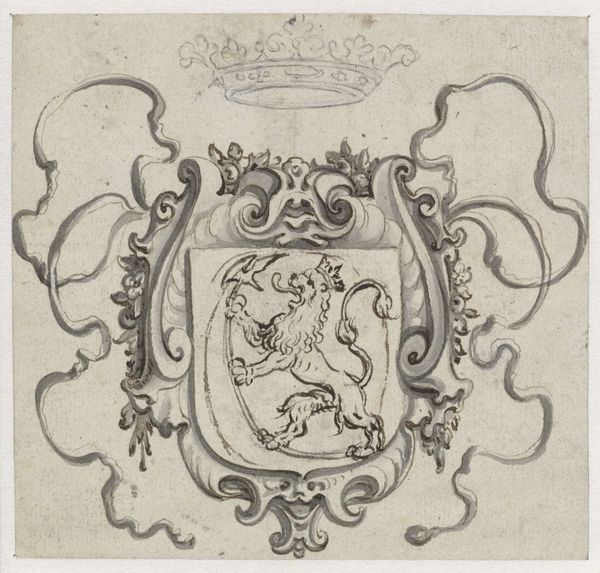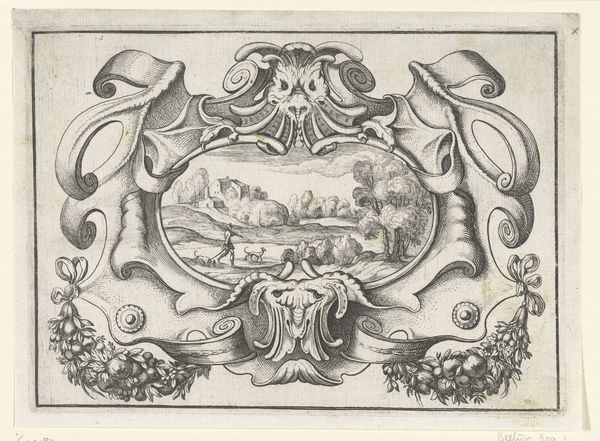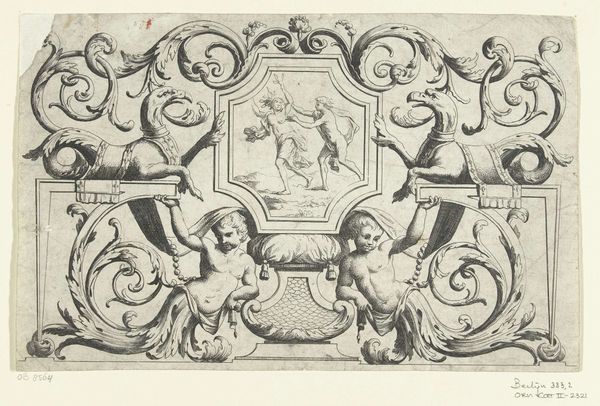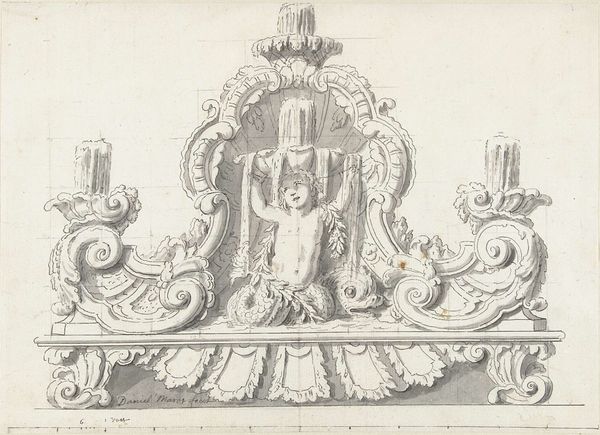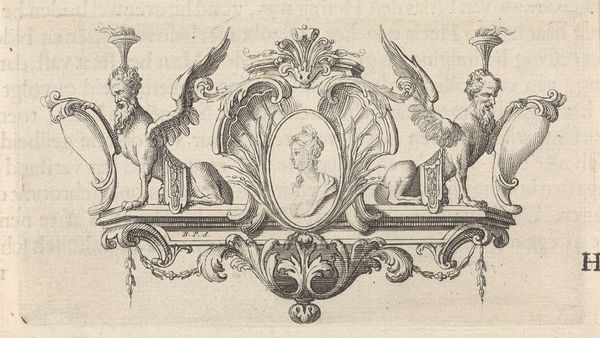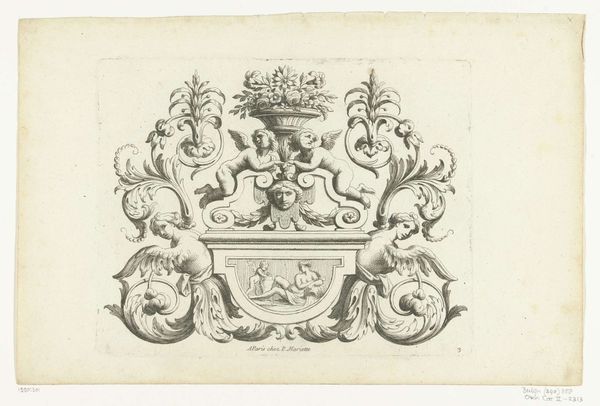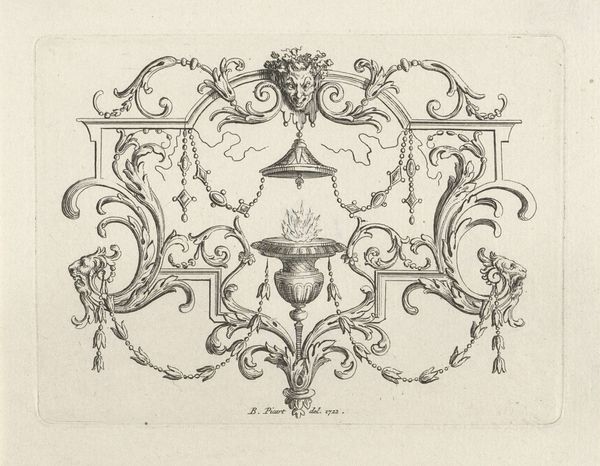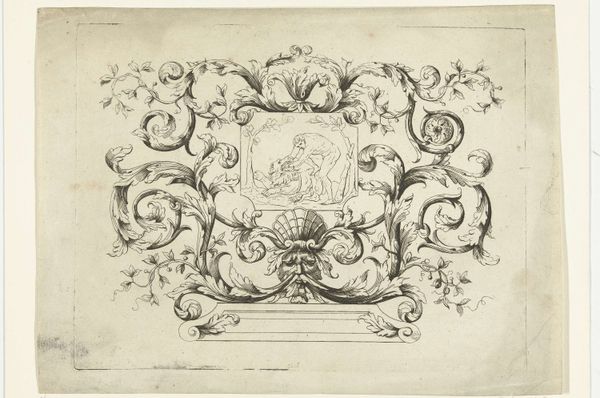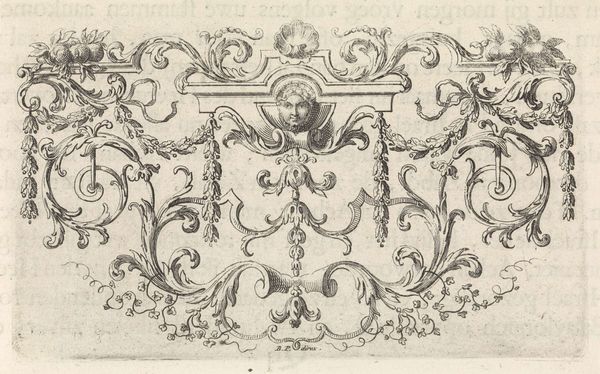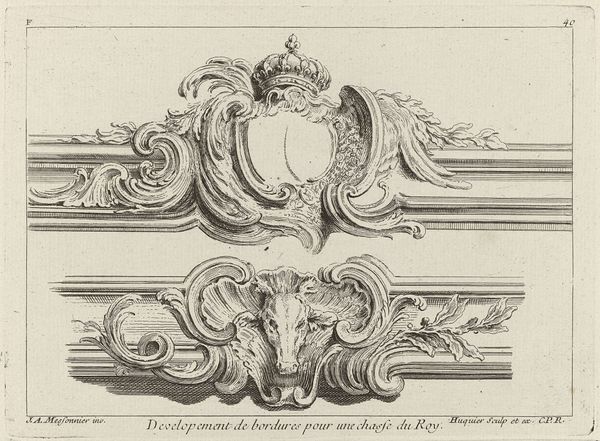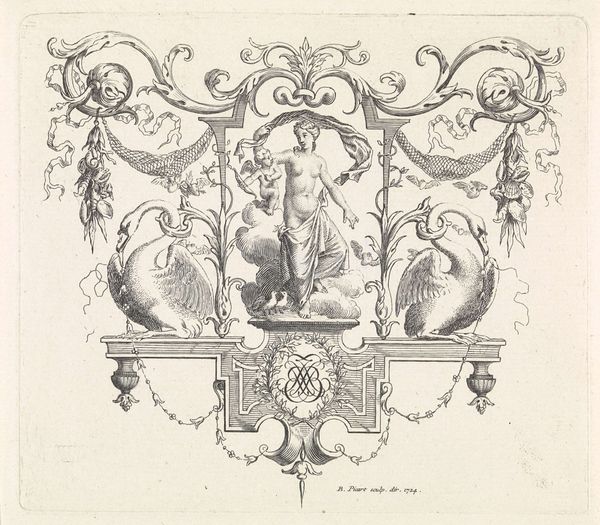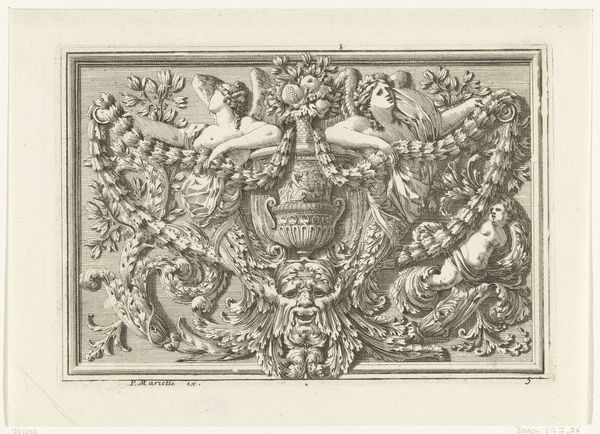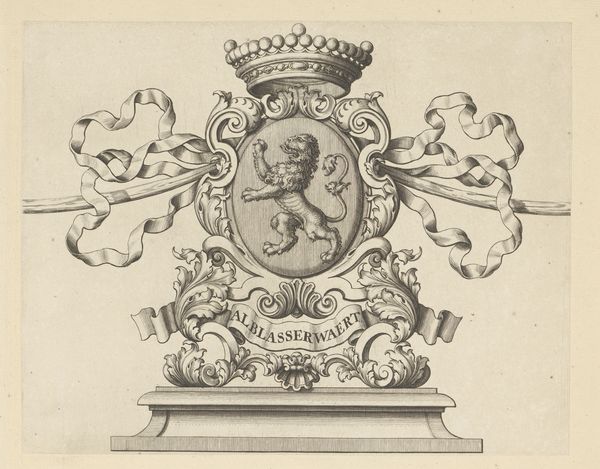
Design for Pediment with Two Heraldic Crests, Lions and a Crown 18th century
0:00
0:00
drawing, print, ink, pen
#
drawing
#
baroque
#
pen drawing
# print
#
form
#
ink
#
line
#
pen
#
history-painting
Dimensions: sheet: 4 7/8 x 12 15/16 in. (12.4 x 32.9 cm)
Copyright: Public Domain
Curator: I’m immediately struck by the inherent power dynamics represented in this "Design for a Pediment with Two Heraldic Crests, Lions and a Crown," an 18th-century ink and pen drawing. Editor: It feels weighty, almost imposing, doesn't it? The lions on either side create this formidable symmetry around the central crests. It speaks to aristocratic privilege. Curator: Precisely. Consider the socio-political climate. The aristocracy was solidifying power structures. Heraldry, like this pediment design, visually asserted their lineage, their right to rule. The lions aren’t merely decorative; they are symbols of dominance. What does it mean to portray heraldic figures as props? Editor: It’s the commodification of identity. Aristocrats had themselves and their lineage visually "packaged," right? Crests were displayed prominently on buildings. Consider it like visual propaganda: solidifying social stratification through images. I think here too of how similar imagery served and served in the construction of classist and ableist stereotypes during this era and later. The art seems an instrument of this agenda. Curator: And it’s no coincidence this drawing mimics architectural design, like the triangular pediment of a building, emphasizing the structure, institution building of that power, solidifying in brick and mortar and ink the right to rule and a worldview of the time. Also, what stories remain untold? I find myself pondering that question, who gets excluded when these messages about aristocratic dominance pervade? Editor: Indeed. And that Baroque line! So much ornamental detail that must reinforce wealth, the sense of elaborate artifice. One wonders about the cultural impact. Do those viewing it really perceive an aesthetic masterpiece or the blatant visual reminder of their societal position? This also served later as nationalistic statements for nation-states, so what purpose did heraldry serve from the point of view of everyday citizens? Curator: Well, it’s certainly offered some interesting reflections about representation and how art shapes ideology. Editor: Indeed. Thanks for this enriching reading, let's dive into another one.
Comments
No comments
Be the first to comment and join the conversation on the ultimate creative platform.
